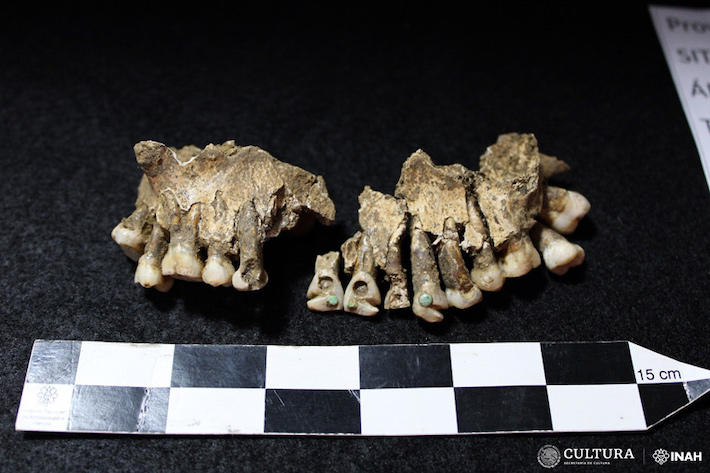 CHIAPAS, MEXICO—According to a statement released by Mexico’s National Institute of Anthropology and History (INAH), osteoarchaeologist Luis Núñez Enríquez and physical anthropologists Miriam Camacho Martínez and Lucía López Mejía have completed the analysis of “Lady SAS,” a set of human skeletal remains discovered in a workshop in the Maya city of Palenque. The study confirmed the initial determination that the remains belonged to a woman who died between 45 and 50 years of age sometime between A.D. 800 and 850, based upon the style of the pottery that had been buried with her. It had been previously suggested that she held elite status, based upon the modification of her skull and teeth. Núñez Enríquez said that the woman’s skull had been modified to make it wider and taller, while skull modifications usually observed at Palenque elongated the skull backwards. The difference in style, the researchers explained, suggests that Lady SAS may have come from someplace else. People were usually buried in temples or in residential areas of Palenque, Núñez Enríquez added, while the remains of Lady SAS were recovered from a lithic workshop. Green stone inlays were found on four of her front teeth and one canine tooth. Elites at Palenque, however, do not have dental inlays, and so the modifications may not reflect status. Instead, such modifications may have been shared by members of the same ethnic group or people who practiced the same trade. Examination of the woman’s teeth also showed possible signs of malnutrition in early life, dental cavities, and tartar buildup from a diet based on corn and animal proteins. A tubular green stone was also found under her jaw during the cleaning of the bones. A fracture at the end of her femur had healed before death, the researchers concluded. To read about a vibrantly decorated burial found at Palenque, go to "Inside a Painted Tomb."
CHIAPAS, MEXICO—According to a statement released by Mexico’s National Institute of Anthropology and History (INAH), osteoarchaeologist Luis Núñez Enríquez and physical anthropologists Miriam Camacho Martínez and Lucía López Mejía have completed the analysis of “Lady SAS,” a set of human skeletal remains discovered in a workshop in the Maya city of Palenque. The study confirmed the initial determination that the remains belonged to a woman who died between 45 and 50 years of age sometime between A.D. 800 and 850, based upon the style of the pottery that had been buried with her. It had been previously suggested that she held elite status, based upon the modification of her skull and teeth. Núñez Enríquez said that the woman’s skull had been modified to make it wider and taller, while skull modifications usually observed at Palenque elongated the skull backwards. The difference in style, the researchers explained, suggests that Lady SAS may have come from someplace else. People were usually buried in temples or in residential areas of Palenque, Núñez Enríquez added, while the remains of Lady SAS were recovered from a lithic workshop. Green stone inlays were found on four of her front teeth and one canine tooth. Elites at Palenque, however, do not have dental inlays, and so the modifications may not reflect status. Instead, such modifications may have been shared by members of the same ethnic group or people who practiced the same trade. Examination of the woman’s teeth also showed possible signs of malnutrition in early life, dental cavities, and tartar buildup from a diet based on corn and animal proteins. A tubular green stone was also found under her jaw during the cleaning of the bones. A fracture at the end of her femur had healed before death, the researchers concluded. To read about a vibrantly decorated burial found at Palenque, go to "Inside a Painted Tomb."
Remains of Palenque’s “Lady SAS” Analyzed
